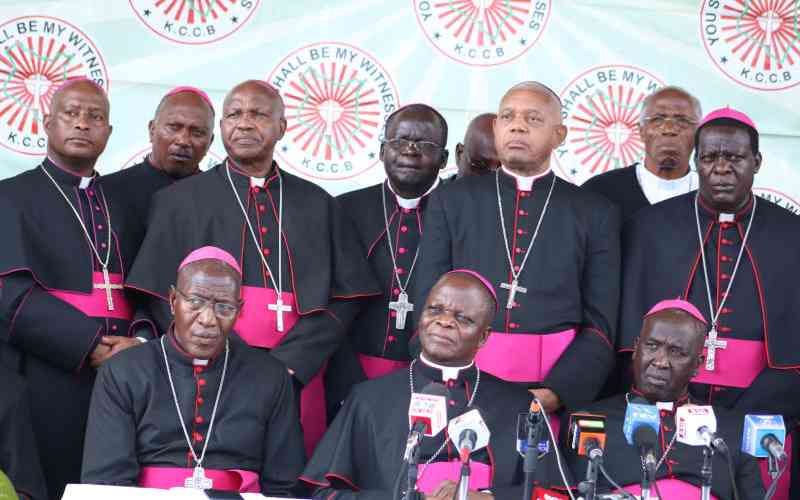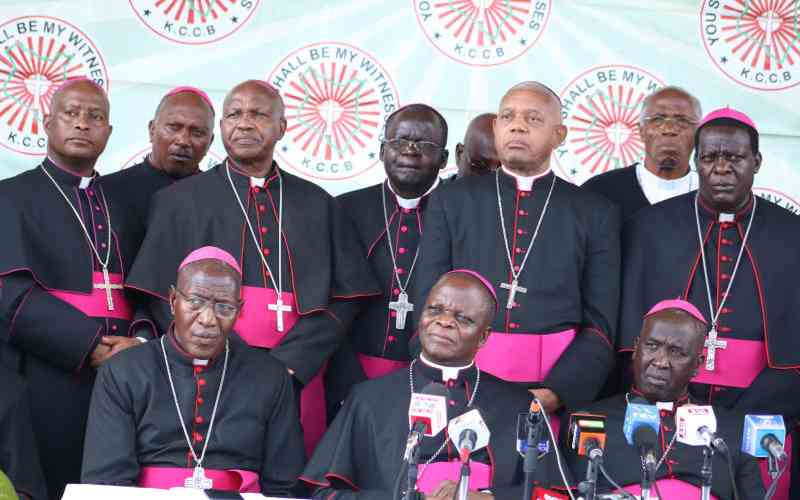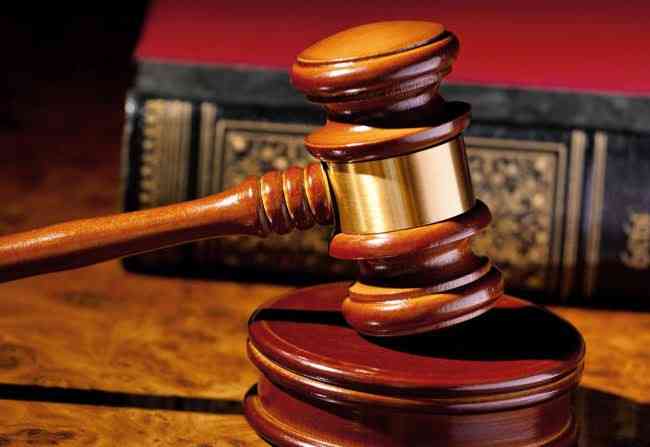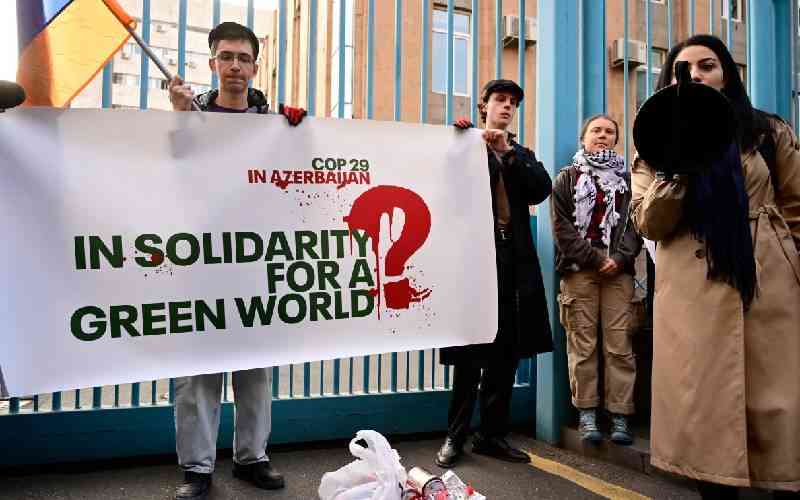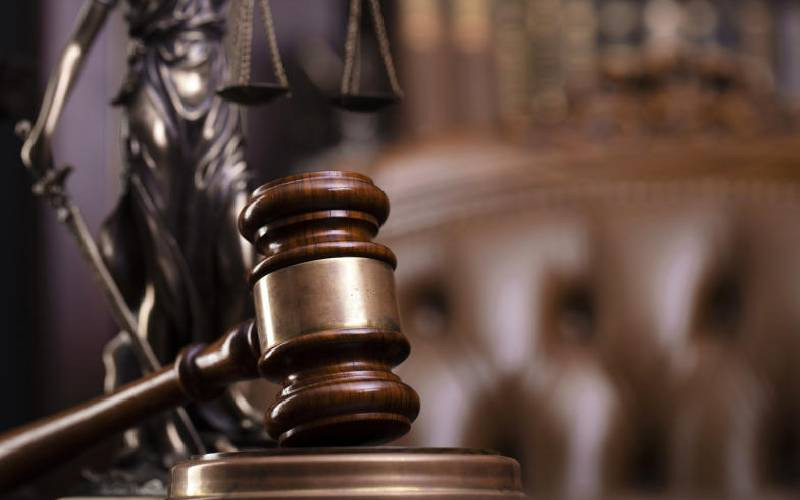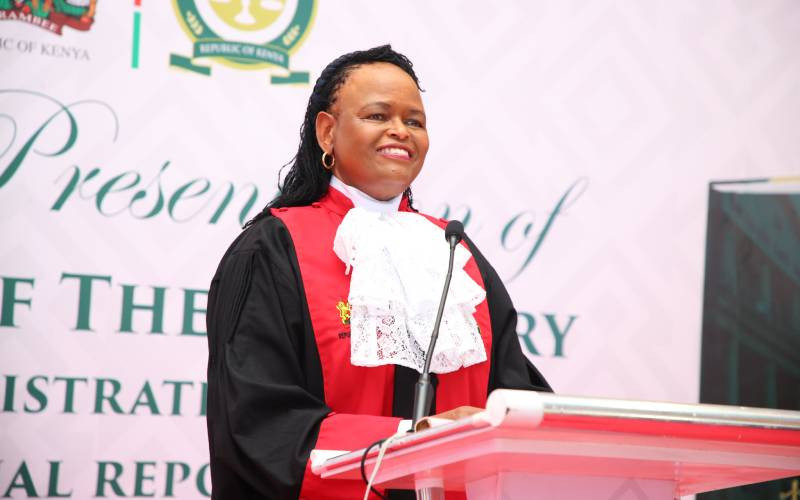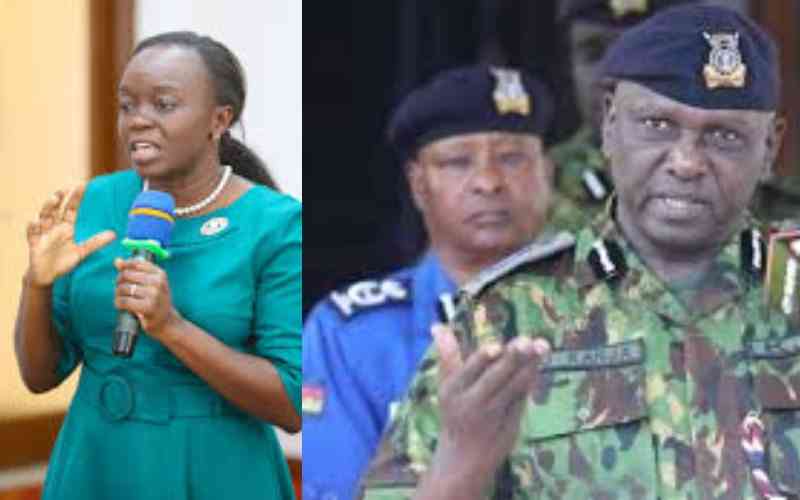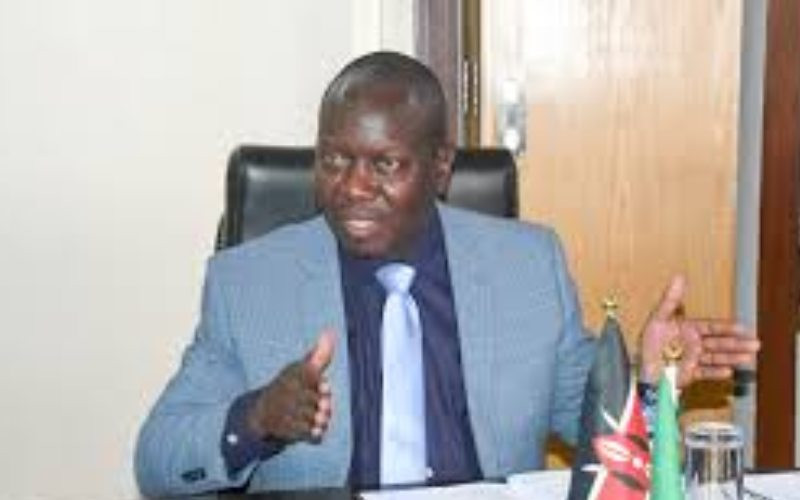
Police Spokesperson Bruno Shioso, Nairobi County Director of Health Services Dr Ouma Oluga and lawyer Ms Isabella Obara. [File, Standard]
On March 4, Major General Mohamed Badi-led Nairobi Metropolitan Services issued a notice on the planned disposal of unclaimed bodies abandoned in public mortuaries between November 2020 and September 2021.
The notice was inviting those with missing loved ones to visit the mortuaries and establish if any of the 191 bodies was of their relatives.
Up to 139 of the bodies were at City Mortuary and the rest at Mama Lucy Hospital mortuary.
However, what was startling about the whole process was that 102 of the bodies were marked “Unknown African Adult Man”. One was marked “Unknown Adult Woman”.
So how is it that the government that has made it illegal for Kenyans above 18 not to have IDs is unable to identify bodies? Law requires every citizen above 18 to present themselves to a registration officer within 90 days of attaining the age for registration and issuance of an ID.
For those who turn 18 while outside the country, the Registration of Persons Act requires that they present themselves for registration within 30 days after their return.
The process of taking the identity card involves recording, in the government data repository, impressions of a person’s fingers and thumb, toes and palms.
So, why the many people the government is unable to identify?
Nairobi County Director of Health Services Dr Ouma Oluga dropped the blame at the doorstep of the police: “Disposal of unclaimed bodies is a legal process the government is required to carry out from time to time. However, identification of recovered bodies is the work of the police.”
Most of the bodies marked unknown were recovered by the police.
Mr Martin Mavenjina, a Security and Transitional Justice programme advisor at the Kenya Human Rights Commission, said cases of people dying and being buried without establishment of their identities pointed to a mess in the system of registration of persons.
“Going by the way we acquire identification in Kenya, starting from acquisition of birth certificates, the argument that the government is unable to identify over 100 bodies does not hold water because all the required information is held by the same government,” he said.
Mr Mavenjina added: “Running the list of the unclaimed bodies in the dailies and claiming due diligence was done is not enough. Government must go the extra mile and sensitise the people on this issue.”
When police collect a corpse, the law requires that they take fingerprints to the registrar of persons for identification.

Up to 139 of the bodies were at City Mortuary and the rest at Mama Lucy Hospital mortuary. [File, Standard]
That is why failure to identify bodies has always elicited questions on how these people died.
Human rights activists, civil society organisations and several Kenyans have dismissed the process of declaring a body unknown and unclaimed. They say the identification process starts with how the body is handled from the point of collection to disposal.
Ms Isabella Obara, a lawyer and programmes officer at Independent Medico-Legal Unit (IMLU), an NGO comprised of a network of doctors and lawyers fighting for a torture-free society through medico-legal documentation, accused authorities of laxity in identifying bodies.
Strengthen law
“The law needs to be strengthened to stem the ever-increasing number of adults being buried as unknown,” said Ms Obara.
In some cases, Ms Obara said, some of the people marked “unknown” are victims of torture, extra-judicial killings and forced disappearances. “Mass disposal is normally aimed at concealing these cases,” she said, adding: “Most of the ‘unidentified’ people are adults, meaning the government already has their details on the basis of registration of births and issuance of national IDs. People can easily be identified. However, killers have become clever. They chop off their legs and hands because they understand our legal practice requires the use of fingerprints to identify a person.”
“IMLU commissioned a study on unclaimed bodies after noticing a trend where perpetrators of extra-judicial killings and security agencies had changed tact... Today, most executions are not done by shooting. You’ll find a case where someone dies mysteriously and you can’t trace their death to anything. All the autopsy reports would show is blunt force trauma, strangulation, or missing body parts.”
“Missing limbs shows the person struggled before they died. Even those recorded as having died by drowning will more often than not have strangulation marks or missing body parts,” Ms Obara said.
Police have been accused of failing to follow procedure when recording details of recovered bodies, raising questions, including what the motives of such omissions are.
But Police Spokesman Bruno Shioso exonerated officers, saying they always endeavoured to analyse fingerprints, besides taking and preserving DNA samples.
“We appeal to those with missing persons to come out and help with both physical and DNA identification of bodies,” said Mr Shioso.
The police are expected to take an unidentified body to the nearest public mortuary, followed by the opening of an inquest. The body is then put in a viewing area and all the items recovered from the scene are placed there for ease of identification.
They are also required to circulate the first signal (also called Signal 7) followed by a Signal 8 to all police stations detailing particular features of the recovered body. The details are cross-checked with those of the people who have been reported missing. Those with missing family members are then directed to the mortuary to identify the body. DNA tests are done by the government chemist.
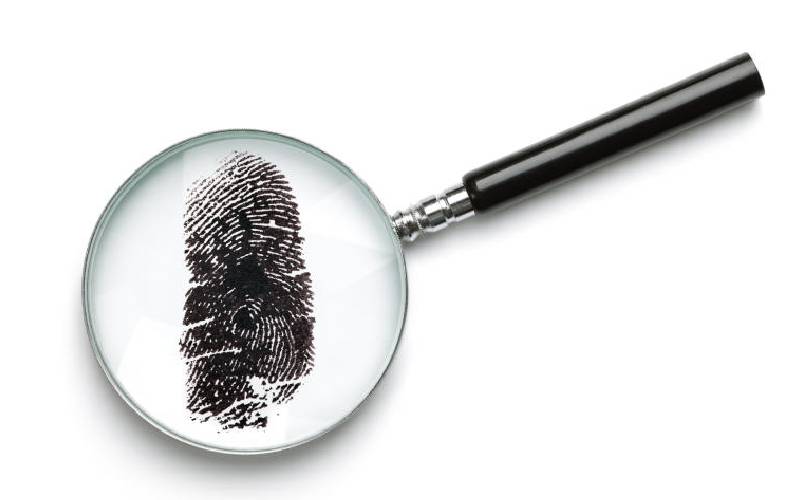
The process of identifying dead bodies relies on Tissue Act, Public Health Act, and the Human Anatomy Act at the moment. [File, Standard]
If the DNA samples match a body, it is marked identified and released to family. But if they don’t match, the samples are preserved in the government chemist.
If the body remains unidentified after 90 days, the public health officer swears an affidavit and presents it before a resident magistrate seeking an order to dispose it on grounds of quarantine, contamination, or possible congestion in the mortuary.
If the magistrate is satisfied, an order to bury bodies in mass graves is issued. However, the public health officer is given another 14 days to make the last call to the public for identification and collection of the unclaimed bodies.
If the period lapses and the body is still unclaimed, the public health officer marks it unknown, and it is buried.
“The process is clear. And even when the public health officer finally buries the bodies, good practice dictates that it is done in shallow graves with plastic or aluminum tags on the limbs. The tags should have the date the body was recovered and the form in which it was found,” Ms Obara said.
“The DNA collected should match the tag. The DNA samples can be kept for more than 10 years. Yet that is not practiced in Kenya today,” she said.
Mr David Wanjohi, a senior city funeral superintendent, has blamed the mess on “negligence” by the police. “Where there are no identification particulars, recording fingerprints is the preferred option. However, police officers are always in a hurry and ignore the simple but important procedure of taking fingerprints even when they are well aware they are the only ones mandated by law to take the fingerprints,” said Mr Wanjohi.
He added: “I can’t forget the chaos we witnessed the last time we tried to insist on accepting identified bodies only. The police started labeling bodies with fake names. This almost landed us in trouble.”
Families whose kins disappear often suffer the agony of tracing them, and have to move from one mortuary to the other looking for them. And there are cases where the police don’t release alerts if the unidentified persons were linked to a crime.
It becomes even more complicated if the case involves minors. Experts say minors and aborted foetuses mostly remain as ‘unknown’.
“Releasing a public notice as the last call may not yield much when all the important steps have been skipped. How do you conclude a body is unknown when you have skipped crucial steps in the identification process? said Obara.
She added: “We are losing many young people and it appears causes of their deaths are being concealed through the mass burials. It is depressing for a family when they are not allowed an opportunity to bury a loved one. And this is not a Nairobi issue, the cases are spread across the country.”
“The law is not also clear on how an unidentified body should be handled. There is no particular law that explains how to deal with unknown and unclaimed bodies. Police officers could easily exploit the lacuna and leave a body as unknown due to a slight hitch such as lack of limbs for fingerprint identification.”
The process of identifying dead bodies relies on Tissue Act, Public Health Act, and the Human Anatomy Act at the moment.
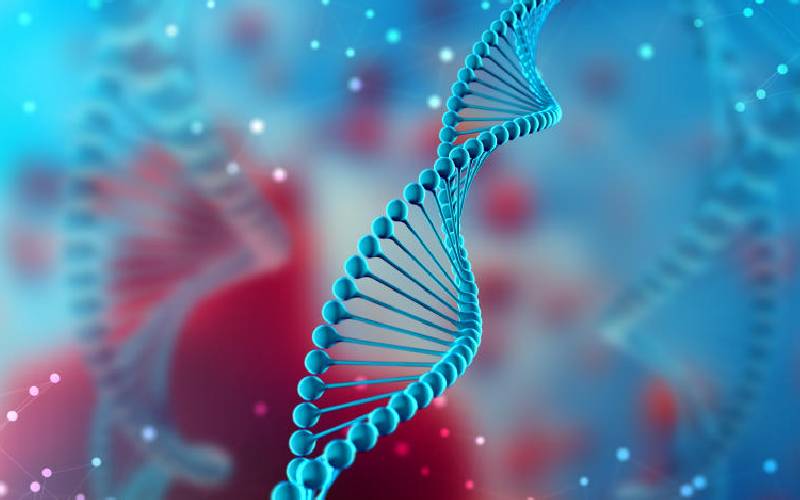
DNA samples can be kept for more than 10 years. [ Shutterstock]
Obara said cases of torture victims who later die and are concealed through mass disposal are men.
“Today will be about people who are unknown and the next time, it will be about people who are known but due to one reason or the other, they will also be buried in mass graves as unknown.
Besides Nairobi, many cases of unknown bodies have also rocked Mombasa, Nakuru, Kisumu and Kakamega counties.
The numbers keep going up every year. In Nairobi for instance, the Public Health department buried 97 bodies in 2019. In 2021, the county issued a notice to bury more bodies.
“In the past five years, there have been thousands of people being buried in mass graves. If we had a proper law that would look at the four-point procedure, we wouldn’t be having so many unknown bodies,” said the activist.
There is a suggestion to establish a DNA Data Bank and to operationalise the proposed National Coroner Service Act, 2017 to address the problem.
The Act is aimed at setting up the National Coroners Service to investigate reported deaths in order to determine the identities of the dead, the time and date when a person died, and the causes of their deaths.
The Act proposes the appointment of a Coroner-General who will assist in policy formulation by advising the government, through forensic studies, on possible measures to help prevent deaths from similar causes hence easing pressure on police as well as reducing the number of unclaimed bodies lying in morgues.
According to the Act, the Coroner-General shall be appointed by a Cabinet Secretary responsible for matters of justice. At the moment, Kenya has no Cabinet Secretary in charge of justice and the department is domiciled in the Attorney General’s chambers.
“For purposes of investigations under this Act, a coroner shall have the power to collect forensic and other evidence and to preserve it in such manner as the Coroner - General may from time to time specify,” states the Act.
 The Standard Group Plc is a multi-media organization with investments in media platforms spanning newspaper print
operations, television, radio broadcasting, digital and online services. The Standard Group is recognized as a
leading multi-media house in Kenya with a key influence in matters of national and international interest.
The Standard Group Plc is a multi-media organization with investments in media platforms spanning newspaper print
operations, television, radio broadcasting, digital and online services. The Standard Group is recognized as a
leading multi-media house in Kenya with a key influence in matters of national and international interest.



